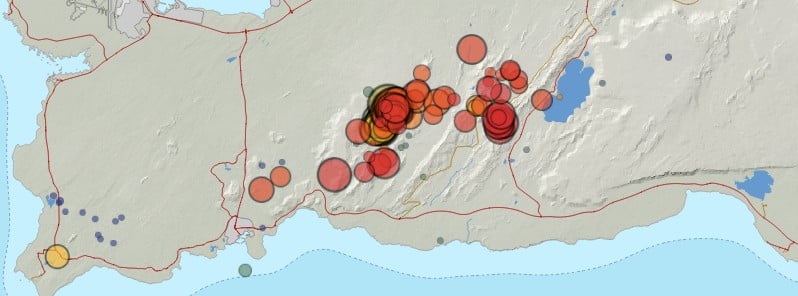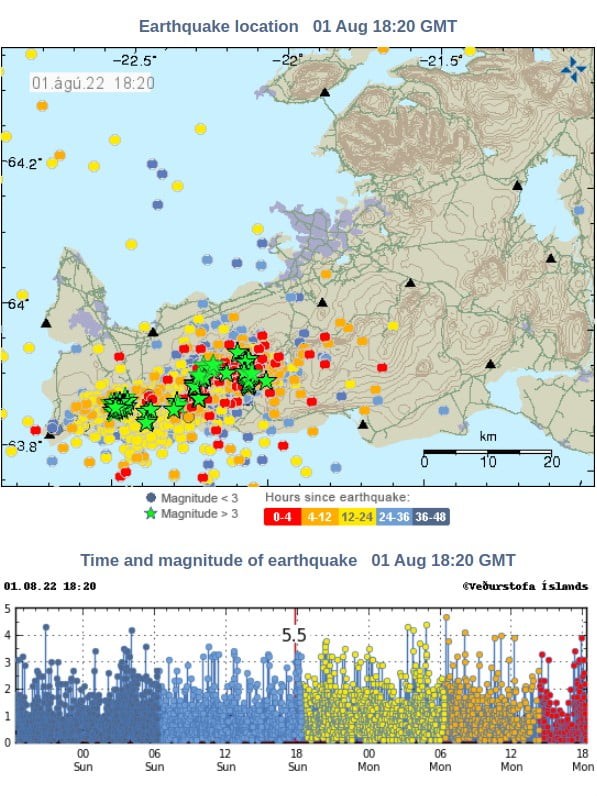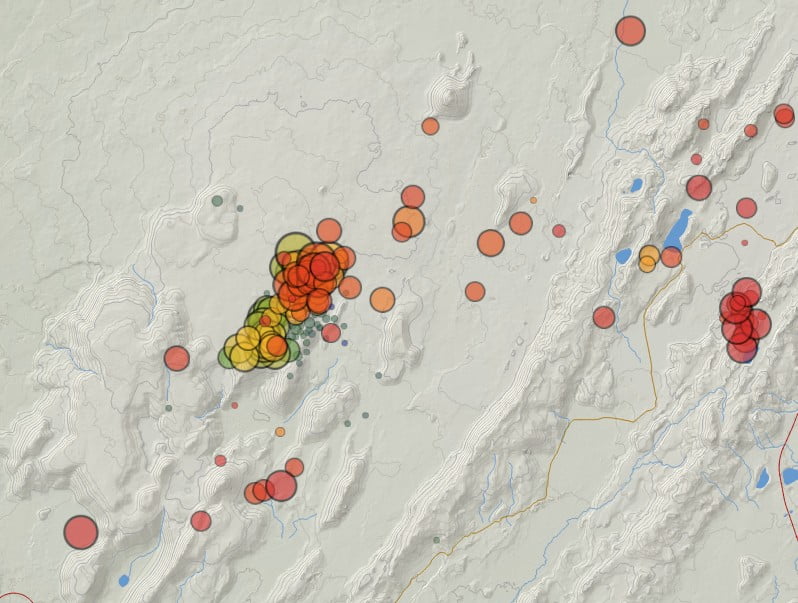More than 5 500 earthquakes near Fagradalsfjall volcano in 48 hours, Iceland

More than 5 500 earthquakes have been registered under Krýsuvík-Trölladyngja volcanic system, east and west of Fagradalsfjall volcano, Reykjanes Peninsula, Iceland since around 09:00 UTC on July 30, 2022. The Aviation Color Code remains at Yellow.
More than 1 800 earthquakes were detected by midnight UTC on July 31, with another 600 over the next 4 hours. By 11:21 UTC on August 1, the number of earthquakes exceeded 5 500.


GPS data shows deformation at stations in the immediate vicinity of the seismic activity. The deformation is consistent with a magma vent forming. This scenario is very similar to the activity in December 2021, but does not seem to be quite as powerful, IMO said.
“GPS displacement data shows magma is pushing its way through the crust at a fast speed, but has not yet broken up through the crust. When that happens is impossible to know, but this might not be a long wait based on the speed the magma is going. Current depth of the magma is around 2 to 4 km (1.2 – 2.4 miles),” said Jón Frímann Jónsson of Iceland Geology in his update posted at 13:47 UTC today.
Increased risk of rockfall is in Reykjanesskagi and has been reported in the area. People are advised to be careful on steep slopes, near sea cliffs and avoid areas where rocks can fall.
The last eruption at this volcano started on March 19, 2021, after more than 50 000 earthquakes registered since February 24, and lasted until September 18, 2021 (VEI 0).
Here’s a selection of our articles covering it:
Geological summary
The Catalogue of Icelandic Volcanoes describes the Krýsuvík-Trölladyngja volcanic system as an approximately 50 km (31 miles) long composite fissure swarm trending about N38°E, including a 30 km (18 miles) long swarm of fissures, with no central volcano.
It is one of the volcanic systems arranged en-echelon along the Reykjanes Peninsula west of Kleifarvatn lake. The Fagradalsfjall and Krýsuvík fissure swarms are considered splits or secondary swarms of the Krýsuvík–Trölladyngja volcanic system.
Small shield volcanoes have produced a large portion of the erupted volume within the system. Several eruptions have taken place since the settlement of Iceland, including the eruption of a large basaltic lava flow from the Ogmundargigar crater row around the 12th century.2
References:
1 Jarðskjálftahrina á Reykjanesi – IMO – July 31, 2022
2 Krysuvik – Geological summary – GVP
Featured image: Earthquake swarm in Reykjanes peninsula July 30 – 31, 2022. Credit: IMO, The Watchers

Commenting rules and guidelines
We value the thoughts and opinions of our readers and welcome healthy discussions on our website. In order to maintain a respectful and positive community, we ask that all commenters follow these rules.